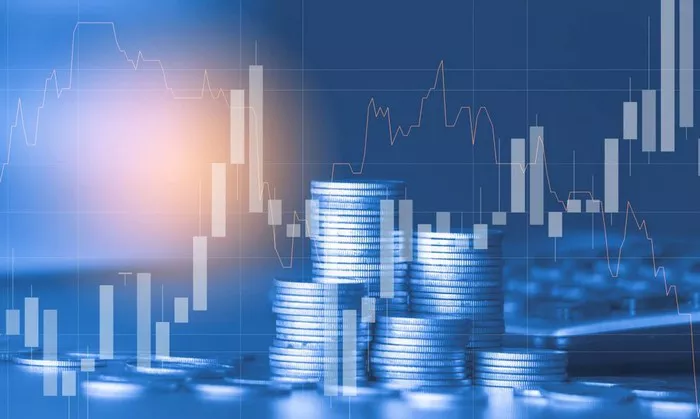Commodity futures trading is a specialized form of investment that involves buying and selling contracts for the future delivery of raw materials or agricultural products. This article explores the fundamentals of commodity futures trading, strategies for profitability, risks involved, and factors to consider before engaging in this market.
Understanding Commodity Futures
Commodity futures are standardized contracts that obligate the buyer to purchase and the seller to deliver a specific quantity and quality of a commodity at a predetermined price on a future date. These contracts are traded on organized exchanges, such as the Chicago Mercantile Exchange (CME) or the Intercontinental Exchange (ICE), and serve multiple purposes for market participants, including hedging against price fluctuations and speculating on price movements.
Key Participants in Commodity Futures
1. Producers and Consumers: Farmers, miners, and other producers use futures contracts to hedge against price volatility, securing a predictable revenue stream or input cost.
2. Speculators: Investors and traders who seek to profit from price movements without the intention of taking physical delivery of the commodity.
3. Arbitrageurs: Traders who exploit price discrepancies between related markets or different contract months within the same market.
Strategies for Profitability in Commodity Futures
Successful trading in commodity futures requires a sound understanding of market dynamics, risk management strategies, and disciplined execution. Here are several strategies employed by traders to profit from commodity futures:
1. Trend Following
Description: Trend following strategies involve identifying and capitalizing on sustained price trends in commodity markets.
Approach:
Technical Analysis: Using charts, indicators, and statistical analysis to identify trends and entry/exit points.
Moving Averages: Utilizing moving average crossovers to confirm trends and signal trades.
Breakout Trading: Entering positions when prices break through established support or resistance levels.
Considerations:
Risk Management: Setting stop-loss orders to limit potential losses during market reversals.
Volatility: Adjusting position sizes based on market volatility to manage risk exposure.
2. Spread Trading
Description: Spread trading involves simultaneously buying and selling related futures contracts to profit from price differentials.
Approach:
Calendar Spreads: Trading contracts with different delivery months to capitalize on seasonal price variations.
Inter-Commodity Spreads: Trading contracts of related commodities (e.g., gold and silver) based on historical price relationships.
Inter-Exchange Spreads: Exploiting price differences between futures contracts traded on different exchanges.
Considerations:
Margin Requirements: Understanding margin requirements for each leg of the spread trade.
Market Correlations: Monitoring correlations between related commodities or contract months to anticipate spread opportunities.
3. Options Trading
Description: Options provide the right (but not the obligation) to buy or sell a futures contract at a predetermined price (strike price) before expiration.
Approach:
Buying Calls/Puts: Speculating on upward (calls) or downward (puts) price movements of commodities.
Selling Covered Calls: Generating income by selling call options on futures contracts already owned.
Protective Puts: Hedging against downside risk by purchasing put options.
Considerations:
Option Premiums: Evaluating the cost (premium) of options relative to potential profit.
Time Decay: Managing the impact of time decay (theta) on the value of options contracts.
Implied Volatility: Assessing the impact of market volatility on option prices and strategy profitability.
4. Fundamental Analysis
Description: Fundamental analysis involves evaluating supply and demand factors, geopolitical events, weather patterns, and economic data to forecast commodity price movements.
Approach:
Supply and Demand Dynamics: Analyzing production forecasts, inventory levels, and consumption trends.
Macroeconomic Indicators: Monitoring interest rates, currency fluctuations, and inflationary pressures.
Geopolitical Events: Assessing the impact of geopolitical tensions, trade policies, and weather disruptions on commodity markets.
Considerations:
Data Sources: Accessing reliable sources of information and market reports for informed decision-making.
Market Sentiment: Incorporating market sentiment and investor behavior into price forecasts.
Long-Term Trends: Identifying secular trends that influence commodity prices over extended periods.
See Also: Can I Do Futures Trading on Kraken?
Risks and Considerations in Commodity Futures Trading
While commodity futures offer opportunities for profit, they also involve inherent risks that traders must manage effectively:
1. Price Volatility
Commodity markets can experience significant price fluctuations due to supply disruptions, geopolitical events, weather conditions, and economic factors.
2. Leverage
Futures trading involves leverage, allowing traders to control large positions with a fraction of the total contract value. While leverage magnifies potential profits, it also amplifies potential losses.
3. Market Liquidity
Liquidity varies across different commodity markets and contract months, affecting the ease of entering and exiting positions without significant price slippage.
4. Margin Requirements
Maintaining sufficient margin balances is essential to avoid margin calls and potential liquidation of positions during adverse market conditions.
5. Regulatory Risks
Changes in regulatory policies, position limits, and trading rules can impact market dynamics and trading strategies.
Steps to Start Trading Commodity Futures
1. Education and Research
Gain a thorough understanding of commodity markets, trading strategies, and risk management principles through books, courses, and educational resources.
2. Selecting a Broker
Choose a reputable brokerage firm with expertise in commodity futures trading, competitive commission rates, and robust trading platforms.
3. Developing a Trading Plan
Create a comprehensive trading plan outlining your financial goals, risk tolerance, entry/exit criteria, and position sizing strategies.
4. Risk Management
Implement risk management techniques such as stop-loss orders, position limits, and diversification to protect capital and minimize losses.
5. Monitoring and Adjustment
Regularly monitor market conditions, adjust trading strategies as needed, and stay informed about global economic developments affecting commodity prices.
Conclusion
Commodity futures trading offers opportunities for investors and traders to profit from price movements in raw materials and agricultural products. By understanding market dynamics, employing effective trading strategies, managing risks, and staying informed, individuals can navigate commodity markets with confidence and enhance their financial portfolios.
Whether you are a hedger seeking to mitigate price risks or a speculator aiming to capitalize on market trends, commodity futures provide a versatile platform for achieving diverse investment objectives. However, it is essential to approach futures trading with diligence, discipline, and a commitment to continuous learning in order to maximize profitability and minimize potential pitfalls in this dynamic market.


